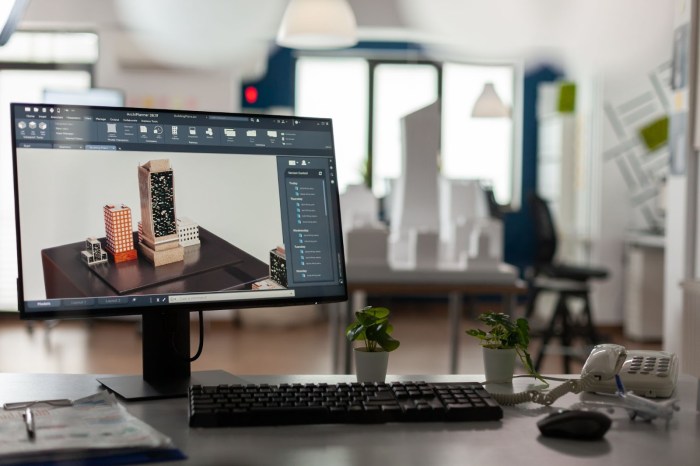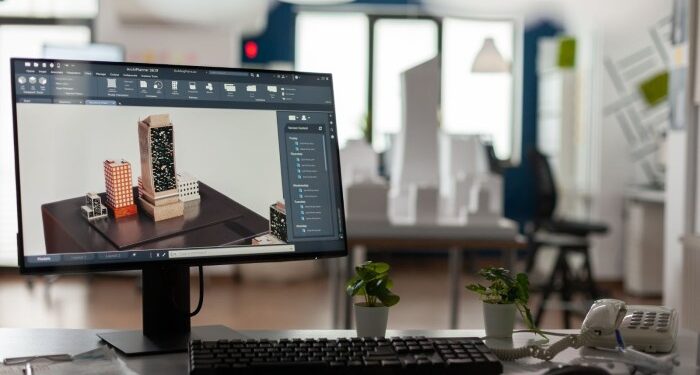Delving into the realm of architectural visualization software for professionals opens up a world of innovation and creativity. This vital tool empowers architects to bring their designs to life with unparalleled precision and realism.
As professionals strive to create breathtaking architectural masterpieces, the use of specialized software becomes instrumental in achieving their vision. Let's explore the intricacies of architectural visualization software and how it revolutionizes the way architects conceptualize and present their designs.
Overview of Architectural Visualization Software
Architectural visualization software has revolutionized the way professionals in the architecture industry create and present their designs. Let's delve into the history, importance, and key features of this specialized software.
Brief History of Architectural Visualization Software
Architectural visualization software has evolved significantly over the years, with the first software tools emerging in the 1980s. Initially, these tools were limited in functionality and often required extensive technical knowledge to operate. However, advancements in technology have led to the development of more sophisticated software that offers a wide range of capabilities.
Importance of Using Specialized Software for Professionals in Architecture
Specialized architectural visualization software plays a crucial role in enhancing the design process for professionals in the architecture industry. By utilizing these tools, architects can create realistic and immersive visualizations of their projects, allowing them to communicate their ideas more effectively to clients, stakeholders, and team members.
Additionally, these software solutions enable architects to experiment with different design options, analyze spatial relationships, and identify potential issues before construction begins.
Key Features of Architectural Visualization Software
- Advanced Rendering Capabilities: Architectural visualization software offers powerful rendering tools that allow professionals to create photorealistic images and animations of their designs.
- Virtual Reality (VR) Integration: Many software solutions now include VR capabilities, enabling architects to experience their designs in a virtual environment and make real-time adjustments.
- Building Information Modeling (BIM) Support: BIM functionality in architectural visualization software facilitates the creation of detailed 3D models that include valuable information about building components and materials.
- Lighting and Material Simulation: Professionals can simulate different lighting conditions and material finishes within the software to achieve accurate representations of their designs.
- Collaboration Tools: Architectural visualization software often includes collaboration features that allow team members to work together on projects, share feedback, and make revisions in real-time.
Types of Architectural Visualization Software
When it comes to architectural visualization software, there are several types available in the market that cater to the diverse needs of professionals in the field. Each type of software comes with its own set of advantages and disadvantages, depending on factors such as complexity, features, and cost.
3D Modeling Software
D modeling software is essential for creating detailed and realistic architectural models. Programs like Autodesk's AutoCAD and Trimble's SketchUp are popular choices among architects and designers. These software tools allow professionals to create precise 3D models of buildings, interiors, and landscapes, providing a solid foundation for visualization and presentation.
Rendering Software
Rendering software is used to create photorealistic images and animations from 3D models. Programs like Chaos Group's V-Ray and Autodesk's 3ds Max are widely used for rendering architectural visualizations. These tools offer advanced lighting, shading, and texturing capabilities, allowing users to create stunning visuals that closely resemble real-life environments.
Virtual Reality (VR) Software
Virtual Reality software enables architects and clients to experience architectural designs in an immersive 3D environment. Applications like Enscape and IrisVR allow users to explore buildings and spaces in virtual reality, providing a more interactive and engaging way to visualize projects.
VR software is particularly useful for conveying the scale and design intent of a project to stakeholders.
Real-time Visualization Software
Real-time visualization software, such as Unreal Engine and Lumion, allows architects to create interactive, dynamic visualizations of their designs. These tools offer instant feedback on design changes, as well as the ability to simulate lighting, materials, and environmental conditions in real-time.
Real-time visualization software is ideal for presentations, design reviews, and client meetings.
Advantages and Disadvantages
- 3D modeling software provides a solid foundation for architectural designs but may require a learning curve for beginners.
- Rendering software produces high-quality visuals but can be time-consuming and resource-intensive.
- VR software offers immersive experiences but may require additional hardware and expertise to operate.
- Real-time visualization software allows for quick design iterations but may lack the level of detail found in traditional rendering software.
Overall, the choice of architectural visualization software depends on the specific needs and preferences of the user, as well as the project requirements.
Key Features and Tools

Architectural visualization software offers a variety of key features and tools that are essential for professionals in the industry
Real-time Rendering
One of the most sought-after features in architectural visualization software is real-time rendering. This allows designers to instantly see how changes in the design affect the final outcome, making the design process more efficient and interactive.
Virtual Reality Integration
Many software now offer virtual reality integration, allowing designers to immerse themselves in the project and experience it in a more realistic manner. This feature enables better communication with clients and stakeholders, leading to more informed design decisions.
Parametric Modeling
Parametric modeling tools enable designers to create complex shapes and structures with ease. These tools help in exploring different design possibilities and iterations, ultimately leading to more innovative and creative solutions.
Lighting and Material Libraries
Advanced lighting and material libraries within the software allow designers to create realistic lighting scenarios and apply a wide range of materials to their designs. This results in more visually appealing and accurate representations of the final project.
Collaboration and Sharing
Architectural visualization software often includes features for collaboration and sharing, enabling teams to work together seamlessly and share their work with clients and other stakeholders. This fosters better communication and feedback throughout the design process.
Workflow Integration
In the world of architectural visualization software, seamless integration with other design and modeling tools is crucial for professionals to streamline their workflows and achieve optimal results.
Common Workflows
- Importing 3D models from CAD software to enhance with textures and lighting in the visualization tool.
- Exporting rendered images or animations from the visualization software to be incorporated into presentations or project proposals.
- Collaborating with team members by sharing project files between different software platforms for a cohesive design process.
Benefits of Integration
- Efficiency: By allowing architects and designers to work seamlessly between different tools, integration saves time and reduces the risk of errors.
- Consistency: Ensuring that all aspects of a project align across various software applications leads to a cohesive and unified final product.
- Creativity: The ability to combine the strengths of different tools fosters innovation and enables professionals to push the boundaries of their design work.
Rendering Capabilities
Rendering capabilities in architectural visualization software play a crucial role in bringing designs to life and providing clients with a realistic representation of the final project. High-quality rendering can make a significant impact on how a design is perceived and can help clients better visualize the end result.
Importance of Realistic Rendering
- Realistic rendering allows clients to see details, textures, and lighting effects that are essential for understanding the design.
- It helps in creating a compelling presentation that can communicate the vision effectively and win over clients.
- Accurate rendering can also identify potential issues or improvements in the design before construction begins.
Tips for Optimizing Rendering Settings
- Adjust the lighting settings to create a natural and realistic look, taking into account the time of day and shadows.
- Use high-resolution textures and materials to enhance the visual quality of the rendering.
- Optimize the rendering settings for a balance between speed and quality, depending on the project requirements.
- Experiment with different rendering engines and settings to find the best combination for your specific project.
Concluding Remarks
In conclusion, architectural visualization software serves as the cornerstone of modern architectural design, offering professionals the means to translate their ideas into visually stunning creations. With its advanced features and seamless integration, this software continues to shape the future of architectural innovation.
FAQ Section
Can architectural visualization software be used by beginners in the field?
While some software may have a steeper learning curve, there are user-friendly options available that cater to beginners looking to explore architectural visualization.
What are the key benefits of using specialized software for architectural visualization?
Specialized software enhances design accuracy, streamlines the workflow, improves collaboration, and allows for realistic presentations to clients.
How can architectural visualization software improve the efficiency of architectural projects?
By offering advanced features like 3D modeling, rendering capabilities, and real-time collaboration, professionals can expedite the design process and deliver high-quality results.



